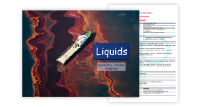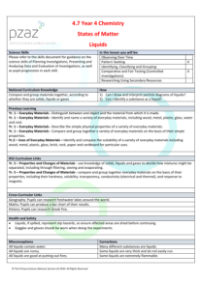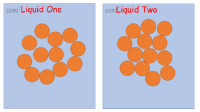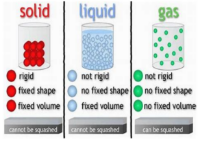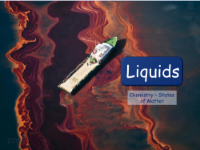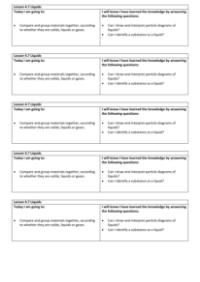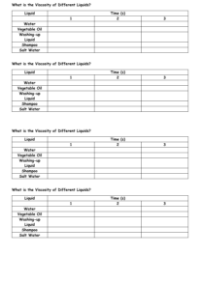Liquids - Teacher Explanation

Science Resource Description
Welcome to Lesson 4.7 on Liquids, a key part of the Year 4 States of Matter unit. In this lesson, pupils will learn to categorize materials as solids, liquids, or gases. A crucial aspect of the lesson is the health and safety measures concerning liquids, which can pose slip hazards if spilled. It's essential to ensure any spills are promptly mopped up and the area dried. Additionally, safety goggles are recommended for this lesson, and gloves may be necessary for those with skin sensitivities. The lesson presents cross-curricular opportunities, allowing pupils to explore geography by researching freshwater lakes, or delve into history by looking into Greek fire. The hands-on activity for this session involves creating a lava lamp, which can be done as a whole class or in smaller groups using 500ml bottles. Pupils will observe the separation of oil and water due to their density differences, and witness the effects of effervescent vitamin C tablets as they produce carbon dioxide and churn the liquid mixture. The experiment should be conducted without the bottle lid to avoid pressure build-up.
The lesson continues with an investigation into the viscosity of liquids. Pupils will use a homemade ramp, thick books, various liquids like golden syrup and dish soap, and a stopwatch to determine how fast different liquids flow, thereby gauging their thickness or viscosity. The experiment is designed to be simple yet effective, with each liquid's travel time indicating its viscosity. Pupils will then move on to the Milk Kaleidoscope activity, which requires whole milk, toothpicks, plates, food colourings, and dish soap. This visually engaging experiment demonstrates the interaction of fats and soap, creating swirling patterns that are reminiscent of Jupiter's clouds. Finally, pupils will analyse particle diagrams to rank liquids by viscosity, understanding that thicker liquids have particles closer together, resembling the structure of solids. This comprehensive lesson aims to provide an enjoyable and educational experience, combining scientific principles with practical experiments.
